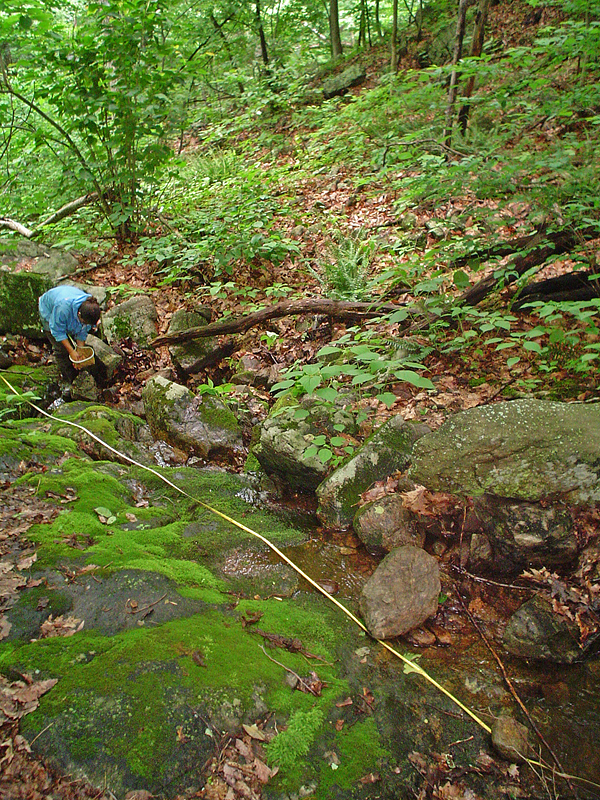Monitoring and Population Ecology
Advances in technology (e.g., PIT tags) have allowed scientists to individually mark more types of species than ever before, and concurrent developments in biometrics have allowed scientists to ask more types of questions about animal populations under more circumstances. Some of these developments have been particularly useful when estimating parameters about amphibians, a group that can be difficult to sample (e.g., multiple life stages, small size, difficult to mark, high juvenile mortality).
These developments in marking and estimation have allowed scientists to ask specific questions about the effects of potential stressors or beneficial management actions on amphibian populations, and quantify these responses.

Monitoring and Population Ecology - ARMI Papers & Reports
Data Release Chorus Frog (Pseudacris maculata) survey data Cameron Pass Colorado 1986-2025.
Authors: Erin Muths; Amy Wray
Date: 2025-06 | Outlet: Figshare
Capture-recapture survey data for chorus frogs (Pseudacris maculata) at two locations in northern Colorado, USA (Arapahoe-Roosevelt National Forest). Data include capture dates and environmental covariates (air and water temps and wind/cloud cover). There are also limited data on frog color, sex, and measurements (snout-vent length and mass). Data were collected as part of the U.S. Geological Survey (USGS) Amphibian Research and Monitoring Initiative, to contribute to an understanding of demography and population dynamics in small hylid frogs.
Data Release Amphibian nighttime call data from Midwest ARMI cricket frog surveys 2024
Authors: Mark F Roth; Aubrey A Schwonek; Jason Tendler; Ryan C Burner
Date: 2025-05-13 | Outlet: U.S. Geological Survey data release
Amphibian nighttime call data from Midwest ARMI surveys conducted in 2024 in Minnesota, Wisconsin, Iowa, Illinois. Many of the surveys were targeting potential Blanchard's cricket frog (Acris blanchardi) habitat.
Data Release Amphibian nighttime call data from Midwest ARMI surveys 2003-2008
Authors: Mark F Roth; Ryan C Burner; Walt J Sadinski
Date: 2025-05-13 | Outlet: U.S. Geological Survey data release
Amphibian nighttime call data from Midwest ARMI surveys conducted in 2003-2008 in Minnesota, Wisconsin, Iowa, Illinois. Many of the surveys were targeting potential Blanchard's cricket frog (Acris blanchardi) habitat
View All Data Releases on Monitoring and Population Ecology
* USGS neither sponsors nor endorses non-USGS web sites; per requirement "3.4.1 Prohibition of Commercial Endorsement."
* PDF documents require Adobe Reader or Google Chrome Browser for viewing.
* PDF documents require Adobe Reader or Google Chrome Browser for viewing.

